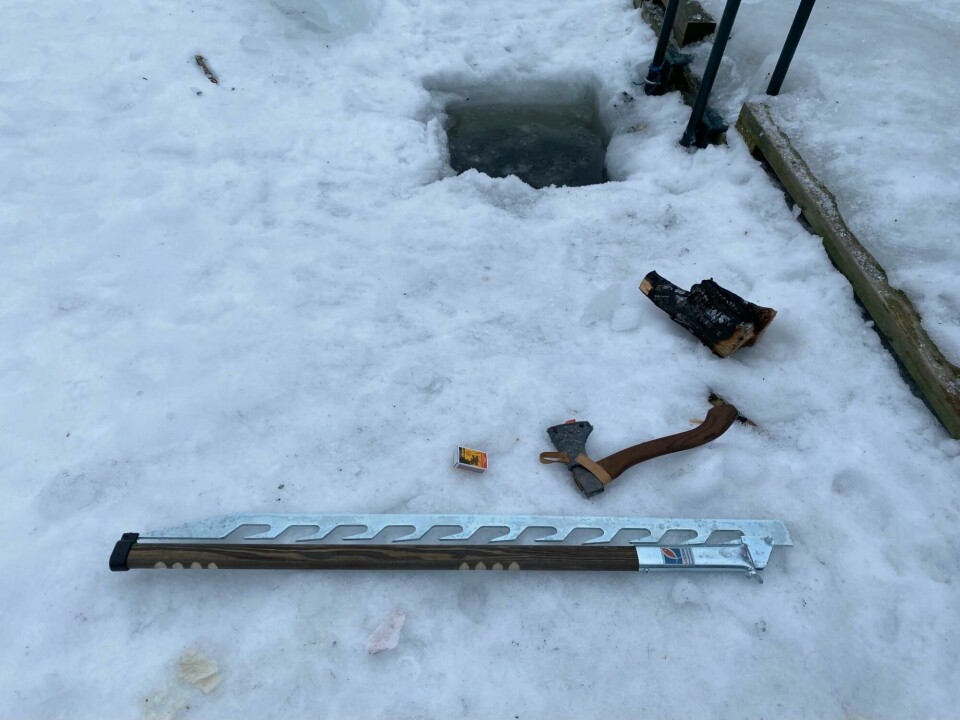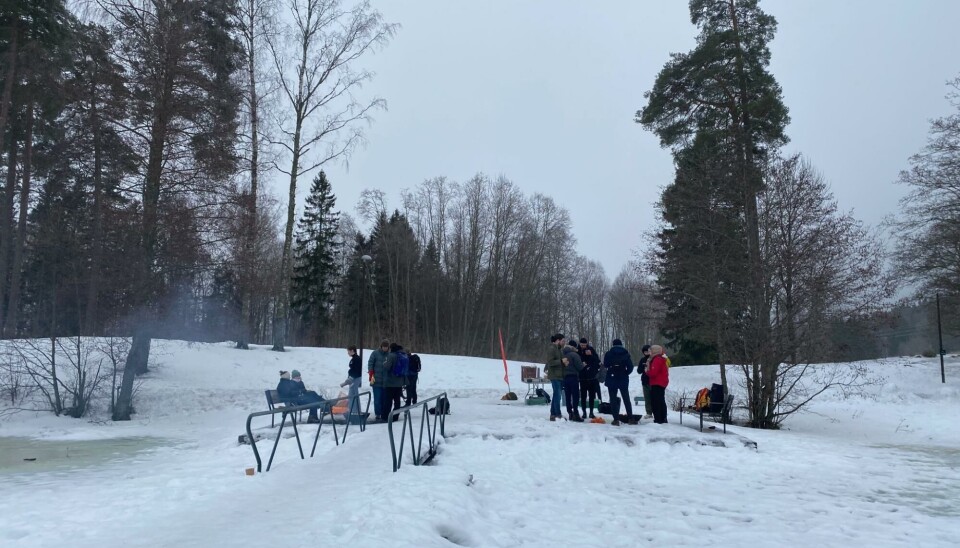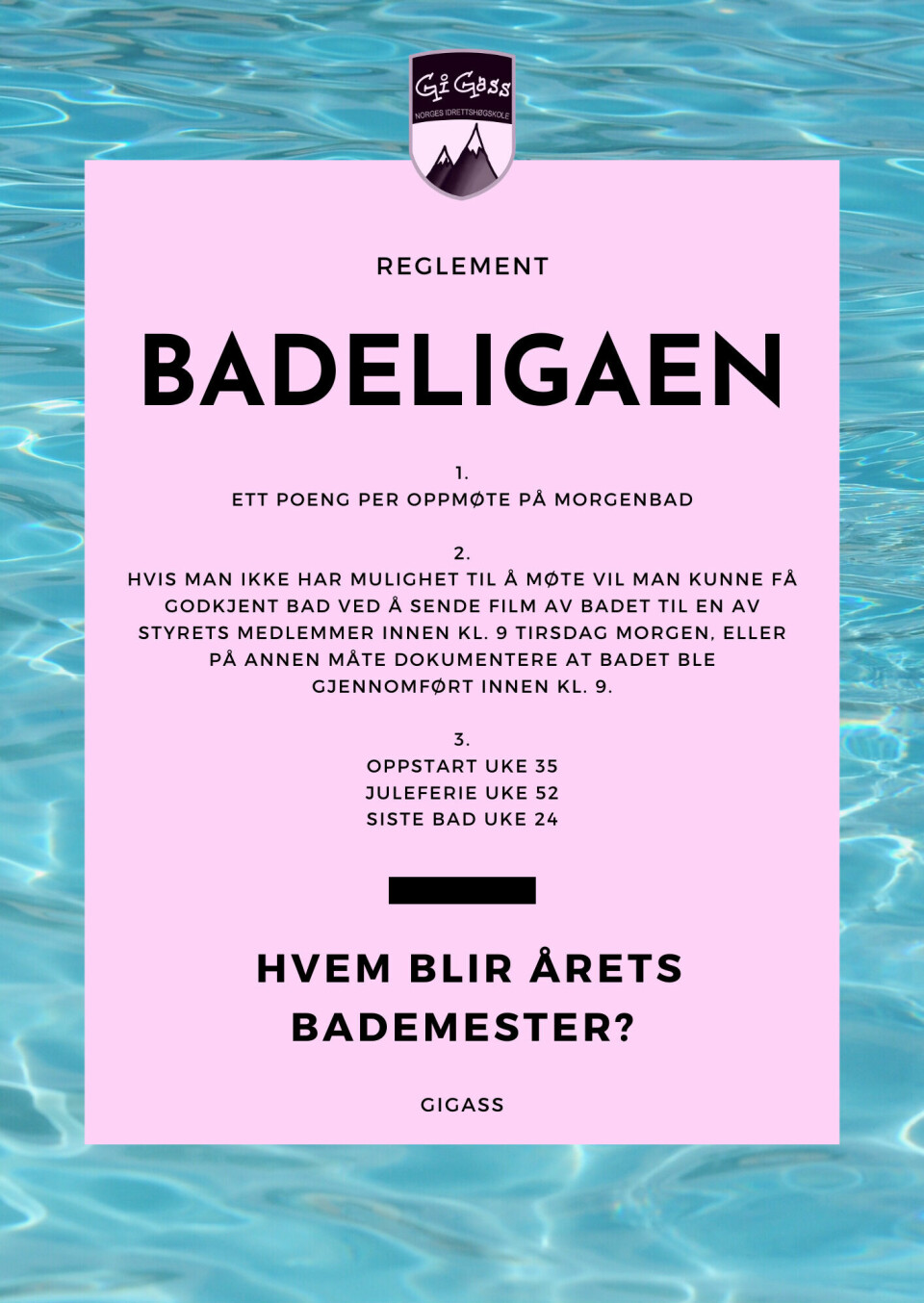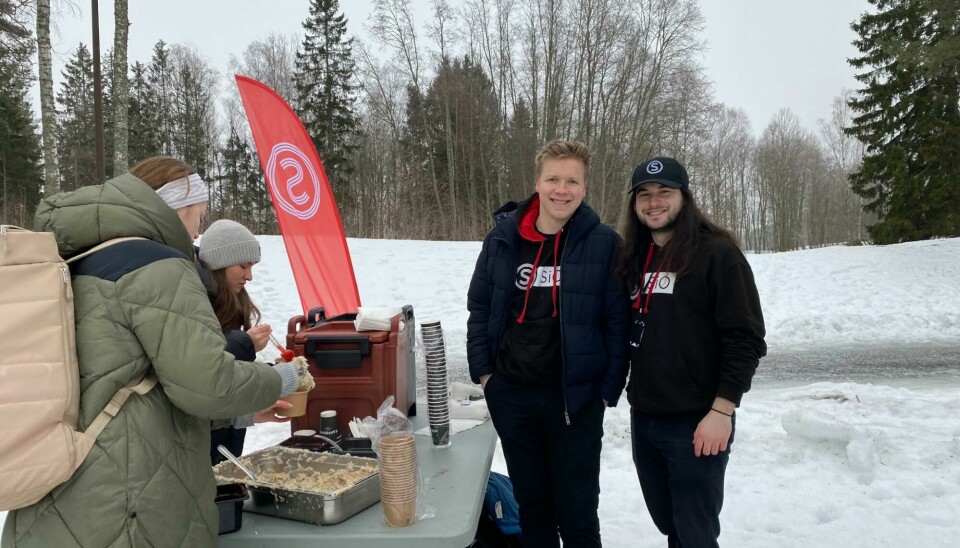#Events

“It makes you feel really alive!” – Ice Bathing Event at Sognsvann
No cold feet here!
It seems as if completing a cold ice bath is a rite of passage as an international student in Norway. Perhaps you haven’t had the chance yet or have been apprehensive about going into the cold water, but with the warmer seasons approaching, this may be your final few weeks with access to one of Oslo’s free ice baths, Sognsvann, before it begins to thaw.
I took the opportunity to report on the ice bathing event coordinated by SiO and the GiGass student association after stumbling on the event via the SiO Eventkalendar to learn a little more about how the event was organised and get a sense of why people were lining up at what felt like the crack of dawn to sit in freezing cold water.
The Atmosphere
Students had made their way to the ice bathing spot on the western part of Sognsvann, just a 5-minute walk from the metro station, as early as 8 am. A queue had formed by the platform and the bench had already been engulfed in towels, clothes, and bags as the first ice bathers were exiting the water. The atmosphere was calm, there was light chatter and laughter from both those who were warming up pre-dip and those who had warmed up post-dip as well as occasional panting from those who were in the water to regulate their breathing.
The holes that were opened right next to the platform were tiny squares hidden within a bed of snow on the frozen lake. People were in and out of there within seconds, making it look easy and easing the tension for those who were watching from a distance, preparing to enter.

“Sometimes we need an axe or even an ice saw to open a new hole (as you saw today) or keep the existing one open,” says Teodor, who since 2020, has been a regular member, board member and board leader of Gi Gass, a student association by and for students at the Norges Idrettshøgskole NIH) which organises activity-centred events, such as snowboarding, climbing, and the ice bathing event partnered with SiO.
Teodor, among the other members of the GiGass student association, was keeping a close eye on the operation, guiding and encouraging people whilst ensuring all safety measures were taken to make sure the experience was comfortable.
SiO members Adrian and Sindre were also on hand to kindly serve warm porridge and hot coffee from the SiO cafeteria to those who braved the cold and took the plunge.
The Ice Bathers
Our very own Inter Universitas journalist, Eva, took a cold dip for the first time and I asked her about her experience. Eva mentioned that she saw the event promoted on SiO’s website last year but was not able to attend, so she has been keeping an eye out for the event’s return. After spotting it again on SiO’s Instagram page the week before the event, she decided to give it a go.
“The whole experience went really smoothly. I just tried to focus on my breath, and that really helped. You can feel your body almost having a shock reaction to the cold, and it makes you feel really alive – just a few seconds with my shoulders under was enough for my first time though! When I got out of the water, I could really feel how much my body was working. I suddenly felt very warm and alert,” says Eva.
When I asked Eva whether she would go again and if she had any tips she would give to first-timers, she told me that she would definitely go again, but would love to go somewhere where she can jump in a sauna straight after. “I think that would feel amazing,” she says.

To prepare for the event, Eva brought her wool jumper and snow boots to keep her warm after the plunge. She also drank a cup of coffee to help her properly wake up before taking the plunge, she tells me, but I imagine that was just the precursor!
Eva also mentioned seeing a lot of people wearing specifically woollen socks in the water to help react to the first dip, but she’s glad to have gotten the full experience not wearing socks, although the post-dip cold, standing on the ice with bare feet afterwards was perhaps more uncomfortable than the ice bath itself. Eva admitted that she would bring a mat, wool blanket or slippers to stand on while changing next time. She would also recommend going with a friend, if possible, for moral support as it helps take your mind off the plunge before you go in.
I also spoke to another student, Rachel, who like Eva, tried ice bathing for the first time after seeing the Instagram post on SiO’s page and enjoyed the experience enough to want to go again, but only with friends to make the experience more enjoyable.
“One thing I didn’t expect was to feel so tired though, as soon as I got home after the ice bathing I felt quite exhausted! I don’t know if that’s a normal response for first timers, but I felt sleepy all day after the ice bath,” Eva tells me.
“The event you saw today involved a bit more as it was open to all students in Oslo as a yearly collaboration with SiO,” says Teodor. They do not usually have bonfires (or served hand-to-plate warm breakfast) due to the short nature of their morning swim, he also adds.
The Origins
Teodor told me that the idea started with a smaller group of students at the Norwegian School of Sport Sciences in 2020, who wanted to do a morning swim, meeting every Tuesday as early as 7:30 in the morning in order to make it back to the first classes at 8:15 am.

“Due to our competitive nature as students at the Norwegian School of Sport Sciences, the swim quickly evolved into a competition as well as a regular, non-formal morning swim,” he says.
The competition, called Badeligaen, or “The swim-league,” awards merchandise from the association to those who partake in the most amount of Tuesday-morning swims before 9 am as possible, as well as a small ceremony at the last swim before summer.
Teodor tells me that the “Tuesday swims” have manifested as weekly occurrences that most students are aware of. Over the last couple of years, larger and larger numbers of students meet for a dip (some colder than others) all throughout the year. These regular Tuesday swims usually require little organising now, other than those keeping count of the ones wanting to participate in the competition, for which the association uses the sports team management tool, Spond, he explains to me.
The highest attendance is usually in the first weeks of each semester, and the last weeks before the summer, ranging from 5 to 30 swimmers throughout the year. The official league is from the second week of the semester to the second last before summer (weeks 35-24) with a Christmas break.
“My personal goal has never been based on time in the water, and it may vary from 30 seconds to 5 minutes. All depending on how fast I can find my peace,” says Teodor.
The Benefits of Ice Bathing
I asked Teodor, a regular ice bather and advocate for ice bathing, why he recommends the activity to better understand its benefits. Although the scientific health benefits of ice bathing are still under continuous research and sometimes contradictory, he informs me about the studies that have proven to:
show a better resistance to insulin-related diseases,
show better cardiovascular performance and rigidity,
boost endorphins and dopamine which gives you a kind of natural high, and
provide benefits to the restitution period after workouts.
Nonetheless, “the subjective experience of an ice swimmer is over all pointing towards a better mental health and robustness/resilience through mastery towards overcoming everyday challenges. This effect might be a result of the unpleasant, yet voluntary, self-inflicted exposure to cold water,” says Teodor.

Teodor’s Tips:
Practical tip: Bring a mat, wool blanket or slippers to stand on while changing, a nice towel or absorbing robe. Have everything laid out ready before swimming. Never ice swim alone!
Technical tip: Find a smooth rhythm for the breath, and then slowly sink into the water whilst maintaining that rhythm. The body will be shocked, and the goal is to handle and overcome the shock with breathing. You sit as long as you feel like in the moment.
































